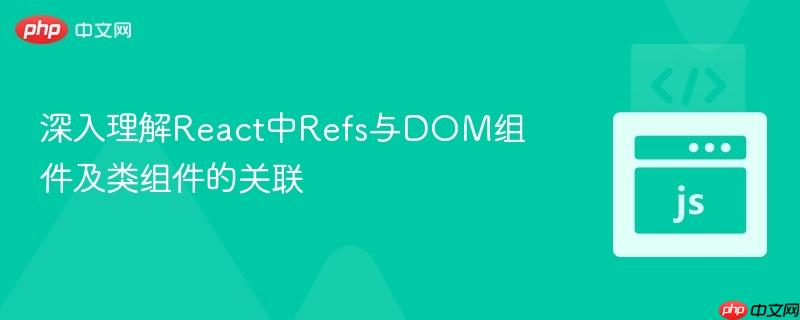
本文旨在深入探讨react中refs机制,特别是其与dom组件和类组件的交互方式。我们将澄清react官方文档中“dom组件”的概念,解释ref转发如何应用于功能组件和类组件,并通过代码示例展示如何将refs传递给类组件实例,从而帮助开发者更灵活地管理和访问组件及dom元素。
在React应用开发中,Refs提供了一种访问在渲染方法中创建的DOM节点或React组件实例的方式。它们通常用于处理需要直接操作DOM的场景,例如管理焦点、文本选择、媒体播放,或者集成第三方DOM库。
理解React中的Refs
Refs是React提供的一种机制,允许我们直接访问DOM节点或组件实例。在大多数情况下,React推荐使用声明式编程,通过props和state来管理组件。然而,在某些特定场景下,我们可能需要跳过React的虚拟DOM,直接与底层的DOM节点或组件实例进行交互,这时Refs就派上用场了。
“DOM组件”的含义
React文档中提到的“DOM组件”通常指的是原生的HTML元素,例如
、
以上就是深入理解React中Refs与DOM组件及类组件的关联的详细内容,更多请关注php中文网其它相关文章!


